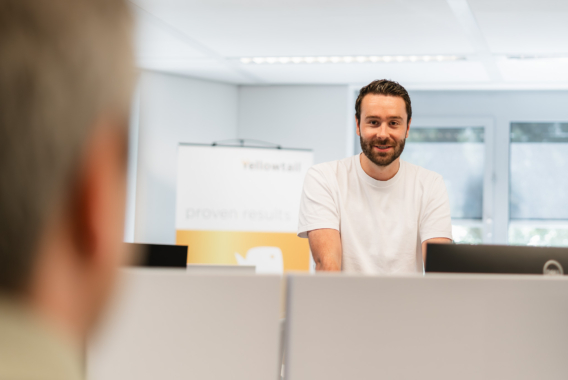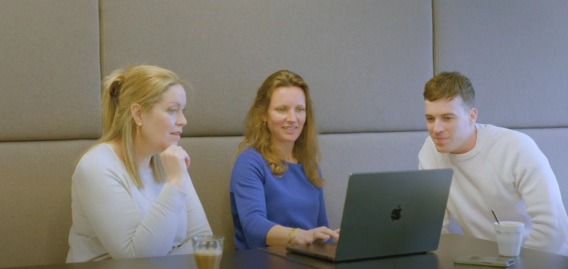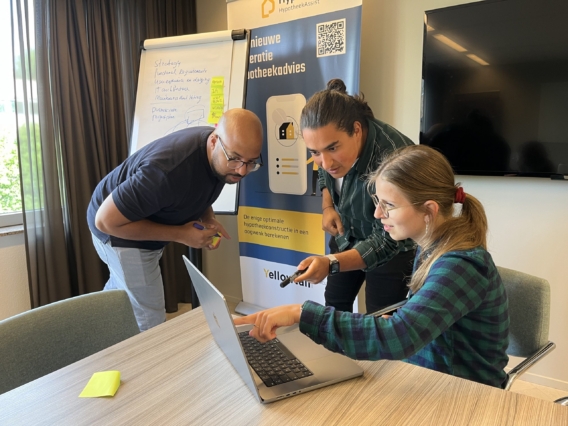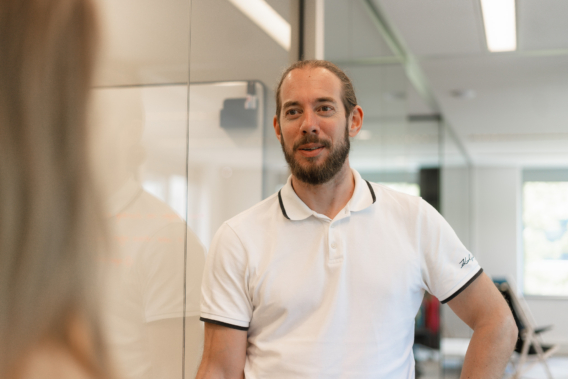The new option in brief
As of 1 January 2023, pension participants will be allowed to withdraw a maximum of 10% of their pension in one go. This will of course reduce the pension payment. This sounds like music to many people’s ears. After all, you suddenly receive a large amount of money. If you choose this option, the option for a high-low pension will no longer apply.
Significant consequences
Robin: “Receiving an amount from your pension pot is of course quite nice. You can do nice things with it, such as travelling, renovating or paying off your mortgage. Such a choice can also be disadvantageous. Because you suddenly receive a large amount, you can have your rent allowance reduced in that year, for example. Or you end up in a higher tax bracket, which means that you have to send a significant part of the amount paid out to the tax authorities, especially when you compare this with the lower tax burden during retirement. The NIBUD is also concerned about this and believes that the scheme should be made fiscally neutral. Pension participants need to be well aware of these consequences, because the negative consequences can lead to you ultimately only having 40% of the amount withdrawn at the end of the line.” David: “You also see this in the United Kingdom, for example. There, people can even withdraw up to 25% of their pension in one go. Experience shows that this can cause people considerable problems in the long term and leave them short of money during their retirement. Although financial advice is quite common in the United Kingdom and many people make use of it, things often go wrong. Guidance in making the choice is therefore crucial.”
Present bias
David: “As a consumer, you can only make a balanced choice about whether or not to withdraw this amount if you take the total picture of your finances into account. The question is: how does someone get that total picture? Who offers it? Having insight into the whole is really essential. Because the temptation is of course great to say yes to a large amount, if you are presented with that option. This is where the ‘present bias’ comes into play: the tendency to choose a certain amount now instead of waiting and getting a larger amount later.’ That is very understandable, especially if you are not that well off.”
The goal is the starting point
Robin: “That is exactly the point. Because why would you want to withdraw that amount in one go? Consumers need to take a step back and first think: when do I need money and for what? Then you can then determine whether receiving an amount in one go is useful and desirable for you. Consumers need to realize that this option to withdraw an amount in one go is a means, and not an end in itself. And that this choice has consequences, such as having your rent allowance reduced or having to pay more tax, which means that you will ultimately have less left. What is your goal and does withdrawing this amount fit in with that? That is a decision that you as a consumer must make step by step and with due consideration. You cannot expect everyone to be able to do this themselves.”
Task versus duty of care
David: “This is a task for pension administrators. Sending a letter with some explanation to their participants is not enough. They will have to do more than just inform, they will have to provide insight that makes the consequences of a choice clear. That is also part of their duty of care. That is where it gets difficult, because pension administrators can only advise on their own scheme. Many administrators are already taking the step to the total financial picture of their participants, but will not quickly take the step to provide advice on other pension schemes, because that does not fall within their responsibilities. But ensuring that their participants can make a good choice, in line with the goal that the participant has in mind, does fall within their duty of care. An interesting area of tension is developing there, in which pension consultants and advisors also get involved. Here you need technology that enables the participant to easily share his/her data with the consultant or advisor.
Opportunities
Robin: “I am convinced that guiding consumers in this choice offers great opportunities for pension providers to get closer to their participants. And not just towards retirement age, but now, at this moment. By making that customer journey together, they can collect valuable data about their participants with which they can provide their participants with even better relevant information in the future. In this way, pension providers can give even more substance to their social task.” David: “I also see a responsibility for employers here. If you have built up premiums for a nice pension together with your employees for years, then you want that arrangement to work out well and that your employees can enjoy their pension optimally, don’t you? In my opinion, providing good information in advance and guidance in these types of choices is also part of that.”
The technology is ready
With the combined technologies of Yellowtail Conclusion and Ortec Finance, pension administrators can give their participants insight into their financial picture in a simple and user-friendly way. This would significantly improve the financial lives of participants, especially if they have to make the decision about whether or not to withdraw an amount from their pension pot without the help of an advisor. We are ready for it.”



















